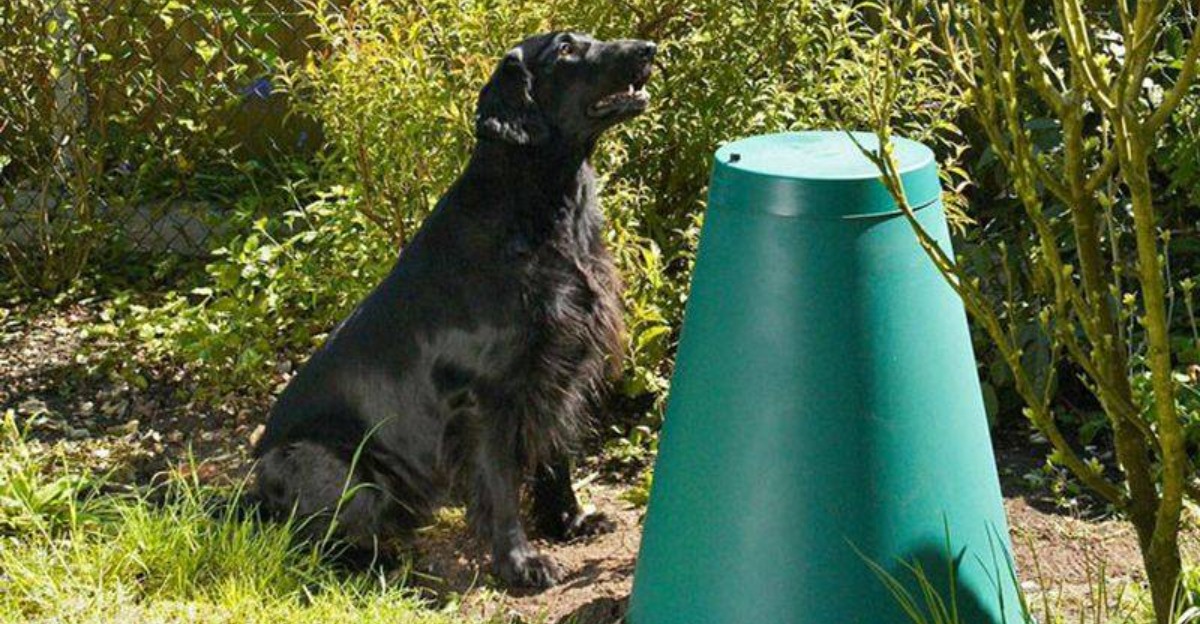
A Beginner’s Guide to Raw Feeding for Dogs and Cats.
Discover the natural way to nourish your furry companions with a raw diet tailored to their ancestral needs. This beginner’s guide explains the principles, benefits, risks, and practical steps of raw feeding for dogs and cats—helping you make informed decisions, ensure balanced nutrition, and create a safe, healthy, and thriving lifestyle for your beloved pets.
🐶 Pet Star
51 min read · 4, Aug 2025

Introduction
Raw feeding is a nutritional philosophy that seeks to feed pets food that mimics what their ancestors would eat in the wild — raw meat, bones, and organs. This practice has grown in popularity as pet owners seek to offer their dogs and cats more natural, wholesome, and biologically appropriate diets.
But is raw feeding just a trend, or is it truly beneficial for your furry companion? What do you need to know before switching from kibble to raw food? This comprehensive beginner’s guide aims to break down the basics of raw feeding, including its benefits, risks, nutritional components, preparation, transitioning, and essential safety tips.
1. What Is Raw Feeding?
Raw feeding is a dietary approach that involves feeding pets uncooked animal products such as:
- Raw muscle meat (chicken, beef, lamb, turkey, etc.)
- Raw meaty bones (RMBs) (chicken wings, necks, ribs)
- Organs (liver, kidney, heart)
- Some vegetables, fruits, and supplements (optional, depending on the feeding model)
There are two main philosophies:
- BARF (Biologically Appropriate Raw Food): Includes raw meat, bones, offal, and some fruits and vegetables.
- Prey Model Raw (PMR): Tries to mimic the prey animals cats and dogs would eat in the wild, often excluding plant matter.
2. Why Feed Raw? Benefits of a Raw Diet
Advocates of raw feeding cite several health benefits:
A. Improved Digestion
Raw food is believed to be easier on a pet’s digestive system than processed kibble. Many pet owners report reduced gas, firmer stools, and fewer digestive upsets.
B. Shinier Coat and Healthier Skin
The high levels of natural fats and amino acids found in raw meat can lead to a glossier coat, less shedding, and reduced skin allergies.
C. Dental Health
Raw meaty bones help scrape off plaque and tartar naturally, reducing the need for dental cleanings.
D. Increased Energy and Vitality
Owners often notice more consistent energy levels and a healthier body weight, as the diet is nutrient-dense and lacks fillers.
E. Smaller, Less Odorous Stools
Raw-fed pets tend to produce less waste because more nutrients are absorbed during digestion.
3. Risks and Considerations
While raw feeding offers potential benefits, it also carries risks:
A. Bacterial Contamination
Raw meat can contain harmful bacteria such as Salmonella, E. coli, and Listeria. While pets have more acidic stomachs and shorter digestive tracts to handle bacteria, it still poses a risk — especially for young, elderly, or immunocompromised pets (and humans handling the food).
B. Nutritional Imbalance
A poorly planned raw diet can lead to deficiencies or excesses of certain nutrients (e.g., too much calcium or too little phosphorus), which may result in long-term health problems.
C. Choking Hazards
Incorrectly sized bones or improperly prepared ingredients can pose a choking risk or cause intestinal blockages.
D. Vet Opposition
Some veterinarians are skeptical of raw feeding due to the risk of contamination and lack of standardized nutritional content.
4. Components of a Balanced Raw Diet
To properly feed raw, balance is essential. Here's a typical breakdown:
A. Muscle Meat (70-80%)
This includes meat from various animals: chicken, turkey, beef, rabbit, pork, and others.
B. Raw Meaty Bones (10%)
Soft, consumable bones like chicken wings, necks, or duck frames. These provide calcium and help clean teeth.
C. Organs (10%)
- Liver (5%): A vital source of vitamin A, iron, and B vitamins.
- Other Organs (5%): Kidney, spleen, pancreas, etc., which offer a variety of micronutrients.
D. Optional Additions
- Vegetables and Fruits (in BARF models): Pumpkin, carrots, spinach, blueberries.
- Supplements: Omega-3s, kelp, probiotics, or vitamin E may be added.
5. How to Transition to Raw Feeding
Transitioning a pet to a raw diet must be done with care:
Step 1: Choose the Model
Decide between BARF and PMR. BARF is more beginner-friendly due to flexibility and includes some plant matter.
Step 2: Start Simple
Begin with one protein source (e.g., chicken) and gradually introduce others to monitor for allergies or digestive issues.
Step 3: Introduce Bones Cautiously
Offer raw meaty bones after a few days of raw meat feeding. Choose soft, edible bones and supervise.
Step 4: Add Organs Gradually
Liver and organs are rich in nutrients and can cause loose stools if introduced too quickly.
Step 5: Monitor Health
Watch for changes in stool, energy levels, coat, and weight. Adjust portions and variety accordingly.
6. Raw Feeding for Dogs vs. Cats
While the principles of raw feeding apply to both, cats have more specific dietary needs.
Dogs:
- Omnivorous tendencies: Can digest small amounts of veggies/fruits.
- More flexible with ingredients.
- Tend to do well on BARF or PMR.
Cats:
- Obligate carnivores: Need high-protein, high-fat, and taurine-rich diets.
- Cannot tolerate carbohydrates well.
- Must have organs (especially liver and heart for taurine).
7. Safety Tips for Handling Raw Food
To prevent health issues, follow these safety practices:
- Wash hands before and after handling raw meat.
- Disinfect surfaces, utensils, and bowls thoroughly.
- Store meat properly: Freeze until use, thaw in the fridge, and avoid leaving out for hours.
- Feed in a designated area that’s easy to clean (e.g., on a towel or tray).
- Supervise eating, especially when feeding bones.
8. Common Raw Feeding Mistakes
- Feeding only meat without bones or organs.
- Giving cooked bones — they splinter and can injure.
- Transitioning too quickly and causing digestive upset.
- Not researching the nutritional needs of your specific pet.
- Ignoring veterinary input.
9. Sample Raw Feeding Meal Plan (Dog)
Day 1
- Chicken thigh (with bone)
- Chicken liver (5%)
- Green tripe
Day 2
- Beef chunks
- Pork kidney (5%)
- Pumpkin purée (1 tbsp)
Day 3
- Duck neck
- Ground turkey
- Spinach + salmon oil
10. Raw Food Buying and Preparation Tips
- Source from reputable suppliers — quality matters.
- Buy in bulk and portion meals to freeze.
- Use a digital scale to maintain correct ratios.
- Pre-make meals for convenience, especially for busy households.
11. Vet and Expert Opinions
Some holistic vets support raw feeding, emphasizing balance and hygiene. Others remain cautious due to bacterial risks and fear of DIY errors. It's essential to:
- Consult with a vet familiar with raw diets.
- Consider working with a pet nutritionist for a tailored plan.
Raw feeding for dogs and cats is an approach rooted in the belief that our domesticated companions thrive best on diets that mirror what their wild ancestors consumed: fresh, raw meats, bones, and organs, often supplemented with small amounts of fruits and vegetables. This biologically appropriate model seeks to provide pets with the kind of nutrition they are evolutionarily designed to digest, rather than heavily processed commercial kibble. The raw feeding movement has gained immense popularity over recent years, driven by pet owners who report noticeable improvements in their animals’ health, including shinier coats, cleaner teeth, better digestion, increased energy, and fewer allergies or chronic conditions. At its core, raw feeding is not just a diet but a philosophy, emphasizing whole, natural, minimally processed foods that preserve vital nutrients and enzymes. There are two primary feeding models: the BARF (Biologically Appropriate Raw Food) diet, which includes raw meat, bones, organs, fruits, and vegetables, and the Prey Model Raw (PMR), which replicates the consumption of whole prey and typically excludes plant matter. For those new to raw feeding, understanding nutritional balance is paramount. A balanced raw diet often follows the 80/10/10 rule—80% muscle meat, 10% raw meaty bones, and 10% organs, with half of that being liver. Muscle meat provides essential proteins and amino acids, bones contribute calcium and other minerals, and organs, particularly liver and kidney, supply vitamins and micronutrients necessary for overall health. The feeding process itself involves sourcing high-quality meats from trustworthy butchers or suppliers, safely storing and preparing them, and feeding appropriate portions based on your pet's size, weight, and activity level. Unlike kibble, which often contains fillers, artificial additives, and grains that some pets may have difficulty digesting, raw food offers high bioavailability—meaning your pet absorbs more nutrients and produces less waste. This often results in smaller, firmer, and less odorous stools. Another benefit often cited by raw feeders is improved dental health; gnawing on raw meaty bones naturally scrapes away plaque and tartar, reducing the need for veterinary cleanings. However, raw feeding does come with responsibilities and risks, which should not be underestimated. Handling raw meat demands strict hygiene practices to avoid cross-contamination—both for the pet and the human handling the food. Surfaces, utensils, and bowls must be cleaned thoroughly after each meal, and hands should be washed before and after handling. Additionally, feeding inappropriate bones (like cooked or weight-bearing bones) can result in cracked teeth or choking hazards. Nutritional imbalance is another significant concern. A raw diet lacking in variety or rich in certain nutrients but deficient in others can lead to serious health problems over time. For example, feeding only chicken meat without organs or bones can cause calcium-phosphorus imbalances, leading to skeletal issues, especially in growing puppies and kittens. This is why it's recommended to include a wide range of protein sources—beef, lamb, turkey, duck, rabbit, and more—to ensure a comprehensive nutrient profile. Transitioning to a raw diet should be done gradually to avoid upsetting your pet’s digestive system. Many beginners start with a single protein source like chicken or turkey, feeding just muscle meat for a few days before slowly introducing meaty bones and organs. Over time, additional proteins and supplements such as omega-3 fatty acids, probiotics, or kelp powder can be incorporated to support optimal health. For pet owners who may be intimidated by DIY raw feeding, commercially prepared raw diets are available and often meet nutritional standards set by regulatory bodies like AAFCO, though it’s still important to read ingredient labels and consult a veterinarian, preferably one with experience in raw feeding or holistic pet nutrition. Cats, being obligate carnivores, have slightly different needs from dogs. They require a diet extremely high in animal protein and fat, and they cannot synthesize certain nutrients like taurine, which must be obtained through raw organs such as heart. Cats also have little to no tolerance for carbohydrates, so vegetables and fruits are generally excluded from feline raw diets. Unlike dogs, who are more omnivorous and may benefit from small quantities of plant matter for fiber and phytonutrients, cats need a diet almost exclusively composed of animal-based products. That said, the raw feeding process for both animals shares key principles: fresh, high-quality ingredients, balance across muscle meat, bones, and organs, and the use of food as preventive medicine. Pet owners must also stay vigilant and responsive to how their pets react to the new diet—monitoring stool quality, energy levels, skin condition, and weight. Not every pet will respond to raw feeding the same way; some may take time to adjust, while others may thrive almost immediately. Likewise, not every household is suited for raw feeding due to time, budget, or health concerns, particularly if there are immunocompromised family members or young children at home. Feeding raw can be more costly than kibble, especially if sourcing organic or pasture-raised meats, though some owners find that the long-term savings in veterinary bills and medications offset the cost. It's essential to remember that raw feeding is not a magic bullet and requires research, dedication, and often collaboration with veterinary professionals. The key to success lies in education—reading books, joining raw feeding communities, consulting with raw-friendly vets or pet nutritionists, and starting with simple, safe recipes before expanding to more complex meal plans. With proper planning and ongoing observation, raw feeding can be a rewarding and deeply beneficial choice for pet health, allowing dogs and cats to eat as nature intended, free from preservatives, fillers, and synthetic ingredients. For those willing to invest the effort, the results can be truly transformative—a happier, healthier, more vibrant pet and a deeper bond forged through the simple act of nourishing them well.
Raw feeding for dogs and cats is a nutritional philosophy centered around the belief that our companion animals thrive best on diets that closely mimic what their ancestors consumed in the wild, focusing on uncooked meats, bones, and organs, often with some inclusion of fruits, vegetables, and supplements depending on the specific model followed. This approach has gained significant traction among pet owners seeking more natural and biologically appropriate alternatives to commercially processed pet foods, particularly kibble, which often contains fillers, artificial additives, and preservatives. The two most popular raw feeding models are BARF (Biologically Appropriate Raw Food), which typically includes raw meat, meaty bones, offal, and small amounts of plant matter, and the Prey Model Raw (PMR), which aims to replicate the whole-prey diet of wild carnivores and usually excludes non-animal ingredients. Advocates of raw feeding argue that this diet supports improved digestion, better dental health, shinier coats, stronger immune systems, smaller and less odorous stools, and increased energy levels, attributing these benefits to the absence of processed ingredients and the inclusion of highly bioavailable nutrients. Muscle meats such as beef, chicken, turkey, lamb, rabbit, and duck form the bulk of a raw diet, offering high-quality protein and essential amino acids necessary for tissue repair and energy. Raw meaty bones like chicken necks, duck wings, and lamb ribs supply not only calcium and phosphorus but also serve as a natural toothbrush by scraping away plaque, which may reduce the need for dental cleanings. Organs like liver, kidney, and heart are nutrient-dense and vital for delivering fat-soluble vitamins (especially vitamin A), iron, zinc, and taurine—an essential amino acid particularly critical for feline health. While dogs, as facultative carnivores, may benefit from small amounts of fiber-rich vegetables like spinach, pumpkin, or carrots, cats are obligate carnivores, meaning their dietary requirements are met almost exclusively through animal tissue, and plant material is generally unnecessary and sometimes poorly digested. Transitioning a pet to raw food requires patience, planning, and close observation. Most experts recommend starting with a single protein source—typically chicken due to its digestibility and availability—before gradually introducing other proteins and organ meats to monitor for sensitivities and ease the adjustment process. Organs should be introduced slowly to prevent digestive upset, and bones should be appropriately sized and never cooked, as cooking makes bones brittle and prone to splintering, which poses a serious risk of choking or internal damage. The ideal raw feeding ratio commonly cited is 80% muscle meat, 10% bone, 5% liver, and 5% other organs, though individual needs can vary based on the animal’s age, breed, weight, activity level, and health status. Feeding raw also requires careful handling to prevent contamination; raw meat can harbor bacteria such as Salmonella or E. coli, which, while usually harmless to healthy pets due to their acidic stomachs and short digestive tracts, can pose a risk to humans, particularly children, elderly individuals, and those with weakened immune systems. Proper hygiene—including handwashing, sanitizing utensils and surfaces, and freezing or refrigerating raw food appropriately—is non-negotiable when preparing and storing meals. Meal preparation can be done daily or in batches for convenience; many raw feeders prepare a week's or even a month’s worth of meals, store them in the freezer, and thaw them as needed. Weighing food with a digital scale ensures balanced portions, while using a rotation of different protein sources helps maintain nutritional variety and completeness. While many pet owners opt to make raw food at home, commercial raw food products are also widely available, ranging from frozen patties and blends to freeze-dried meals that only require rehydration, offering a more convenient alternative that may still deliver similar benefits if formulated properly. It's important to note, however, that not all commercially available raw foods are created equal—some may lack critical nutrients or use low-quality ingredients—so it's crucial to check that they meet AAFCO standards or are approved by veterinary nutritionists. Consulting with a veterinarian who supports raw feeding or a certified pet nutritionist is strongly advised before beginning, particularly for puppies, kittens, pregnant animals, or pets with medical conditions, as their needs are more complex and mistakes can have long-term consequences. Though raw feeding may seem expensive at first glance due to the cost of high-quality meat and organs, many pet owners find the long-term savings on veterinary bills, medications, and dental care make it worthwhile. That said, it's not the right solution for every household; people with very tight budgets, limited access to reliable meat sources, or health vulnerabilities in the home might prefer high-quality commercial pet foods that offer consistency and safety. Additionally, raw feeding requires ongoing education, as new research and best practices continue to evolve. Joining raw feeding communities, reading books, attending seminars, or following pet nutritionists online can help deepen your understanding and keep you informed. While critics of raw feeding raise valid concerns—particularly around hygiene, the risk of bacterial transmission, and nutritional imbalances—these risks can often be minimized through informed practices and responsible feeding. Ultimately, raw feeding represents a lifestyle choice that emphasizes intention, awareness, and a deep commitment to pet health. It's not simply about what goes into the bowl, but about taking control of your pet’s diet, knowing each ingredient, and making informed choices every step of the way. For beginners, the journey into raw feeding may seem overwhelming at first, but with time, practice, and guidance, it can become a deeply rewarding routine that enhances the bond between pet and owner and leads to a longer, healthier, and happier life for your beloved animal companion.
Conclusion
Raw feeding for dogs and cats is a lifestyle choice that can offer significant benefits when done correctly. With a focus on natural, species-appropriate food, it may lead to improved health, better digestion, shinier coats, and more energy.
However, raw feeding also requires commitment, education, and careful preparation to ensure pets receive balanced nutrition and remain safe from bacterial exposure. It's not a one-size-fits-all approach and may not suit every pet or owner.
If you're considering raw feeding, start slow, seek guidance, and prioritize cleanliness and balance. A well-informed and cautious approach can help your furry friend thrive naturally.
Q&A Section
Q1:- Is raw feeding safe for all dogs and cats?
Ans:- Not necessarily. While many pets thrive on raw diets, it may not be suitable for puppies/kittens, senior pets, or those with compromised immune systems without veterinary guidance.
Q2:- Can I feed my pet only raw chicken every day?
Ans:- No. A balanced raw diet includes a variety of meats, bones, and organs to meet all nutritional needs. Feeding only one type of meat can cause deficiencies.
Q3:- Do I need to add vegetables to my dog’s raw diet?
Ans:- It depends on the feeding model. BARF includes vegetables for fiber and phytonutrients, but PMR excludes them, focusing strictly on animal-based foods.
Q4:- Can I cook the bones before feeding them to my pet?
Ans:- No. Cooked bones become brittle and can splinter, leading to choking or internal injuries. Only feed raw, soft, edible bones.
Q5:- How do I know if my pet is getting all the nutrients on a raw diet?
Ans:- Regular vet checkups, blood work, and consultation with a pet nutritionist can ensure your pet's diet is balanced and complete.
Similar Articles
Find more relatable content in similar Articles

Virtual Vet Visits: Are Online Consultations Reliable?..
As pet healthcare embraces dig.. Read More

Composting Pet Waste: A Greener Way to Clean Up...
As pet ownership continues to .. Read More

Social Media for Pets: Turning Your Pet into a Digital..
From playful puppies to charis.. Read More

Pets and Mental Health: The Science Behind Emotional H..
Discover the profound impact o.. Read More
Explore Other Categories
© 2024 Copyrights by rPets. All Rights Reserved.